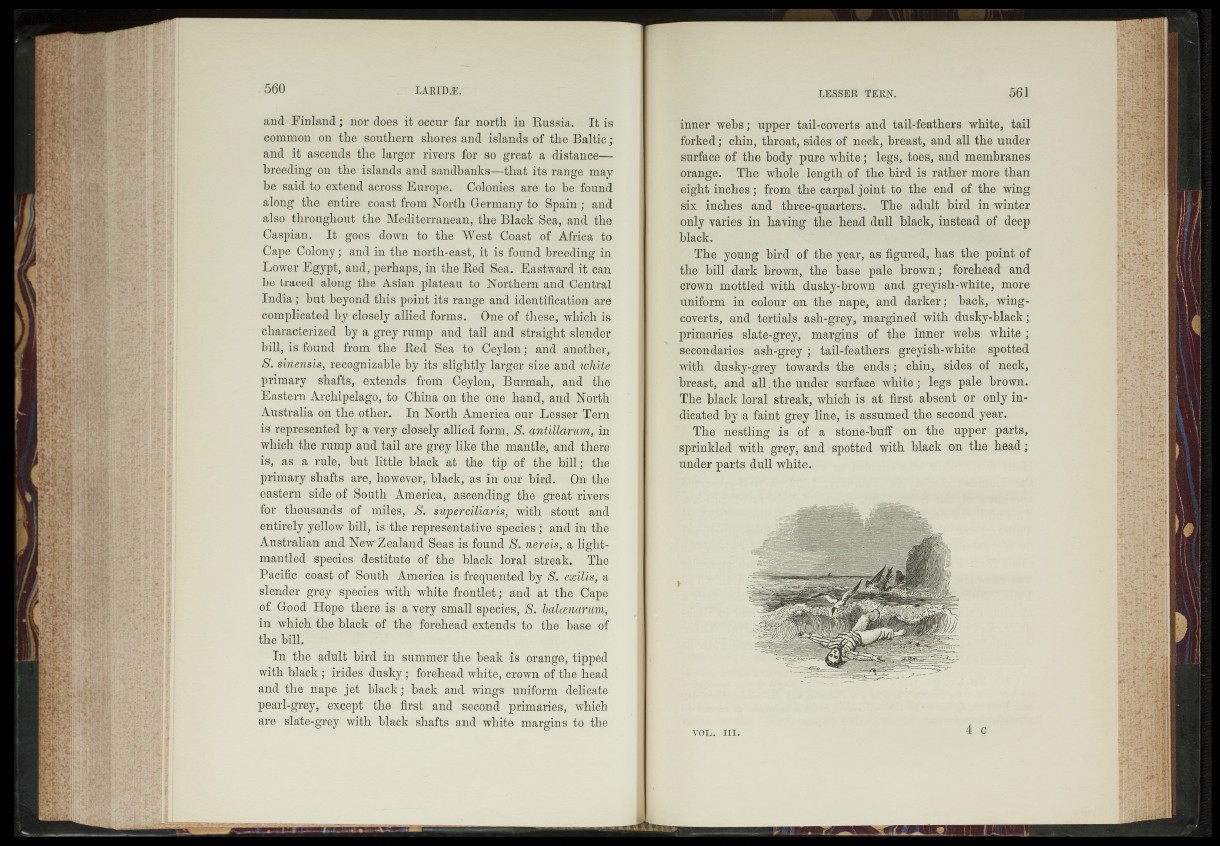
and Finland ; nor does it occur far north in Bussia.
common on the southern shores and islands of the Baltic;
and it ascends the larger rivers for so great a distance—
breeding on the islands and sandbanks—that its range may
be said to extend across Europe. Colonies are to; be: found
along the entire coast from North Germany to-Spain ; and
also throughout the Mediterranean, the Black Sea, and the
Caspian. It goes down to the West Coast of Africa to
Cape Colony ; and in the north-east, it is found breeding in
Lower Egypt, and, perhaps, in the Bed Sea. Eastward itlean
be traced along the Asian plateau to- Northern and Central.
India; but beyond this point its range and identification-- are
complicated by closely allied, forms. One of these, which is
characterized by a grey rump and tail and straight slender
bill, is found from the Bed'Sea to Ceylon; and another,
S. sinensis, recognizable by its slightly larger size and 'Shite
primary shafts, extends from Ceylon, Burmah, and -.the
Eastern Archipelago, to China on the one hand, and-North
Australia on the other. In North America our Lesser Tern
is represented by a very closely allied form, N. antillfamm, in
which the rump and tail are grey like the mantle; and there
is, as a rule, but little black at the tip of the bill; the
primary shafts are, however, black, as in our bird. On the
eastern side of South America, ascending tike: great rivers
for thousands of miles,- S. supereiliaris, with stout and
entirely yellow billf is-,the representative species ; and 'in fhe
Australian and New Zealand Seas is.-found & nereis; a light-
mantled species destitute - dflthe black loral streak. The
Pacific coast of South’ Arherica is frequented', by Ikxilis., a
slender grey species' witk.white frontlet; and at the~Cape
of -Oood Hope there is a very small species,’ d^ladamSm,
in- which the black of" the forehead extends :t@i the base - of
the bill. ’
In the adult bird in summer the beak is orange, tipped
with black; hides duskyforeheadwhite,.crown of 'th’ehead
and the nape|rot black; back and- wings uniform delicate
pearl-grey, except the first and second primaries, which
are slate-:grey. with black. shafts: and white: margins for the
inner webs; upper tail-coverts and tail-feathers white, tail
forked; chin, throat* sides of neck, breast, and all the under
surface of the body pure white; legs, toes, and membranes
orange. The whole length of the bird is rather more than
eight inches; from the carpal joint to the end of the wing
six inches and three-quarters. The adult bird in winter
only varies in having the head dull black, instead of deep
black.
The young bird of the year, as figured, has the point of
the bill dark brown, the base pale brown; forehead and
crown mottled with dusky-brown and grqyish-white, more
uniform in colour on the nape, and darker ; back, wing-
coverts, and tertials a|h-grey, margined with dusky-black;
primaries slate-grey, margins of the inner webs white ;
secondaries ash-grey ;' tail-feathers greyish?white, .spotted
with dusky-grey towards the ends; chin, sides of neck,
breast, and all.the under surface’ white ;' legs pale brown.
The black loral streak, which is at first absent or only indicated
by a faint grey line, is assumed the second year.
~ The nestling is of a stone-buff on the upper parts,
sprinkled with grey, and spotted -with black on the head;
under parts dull white,- -